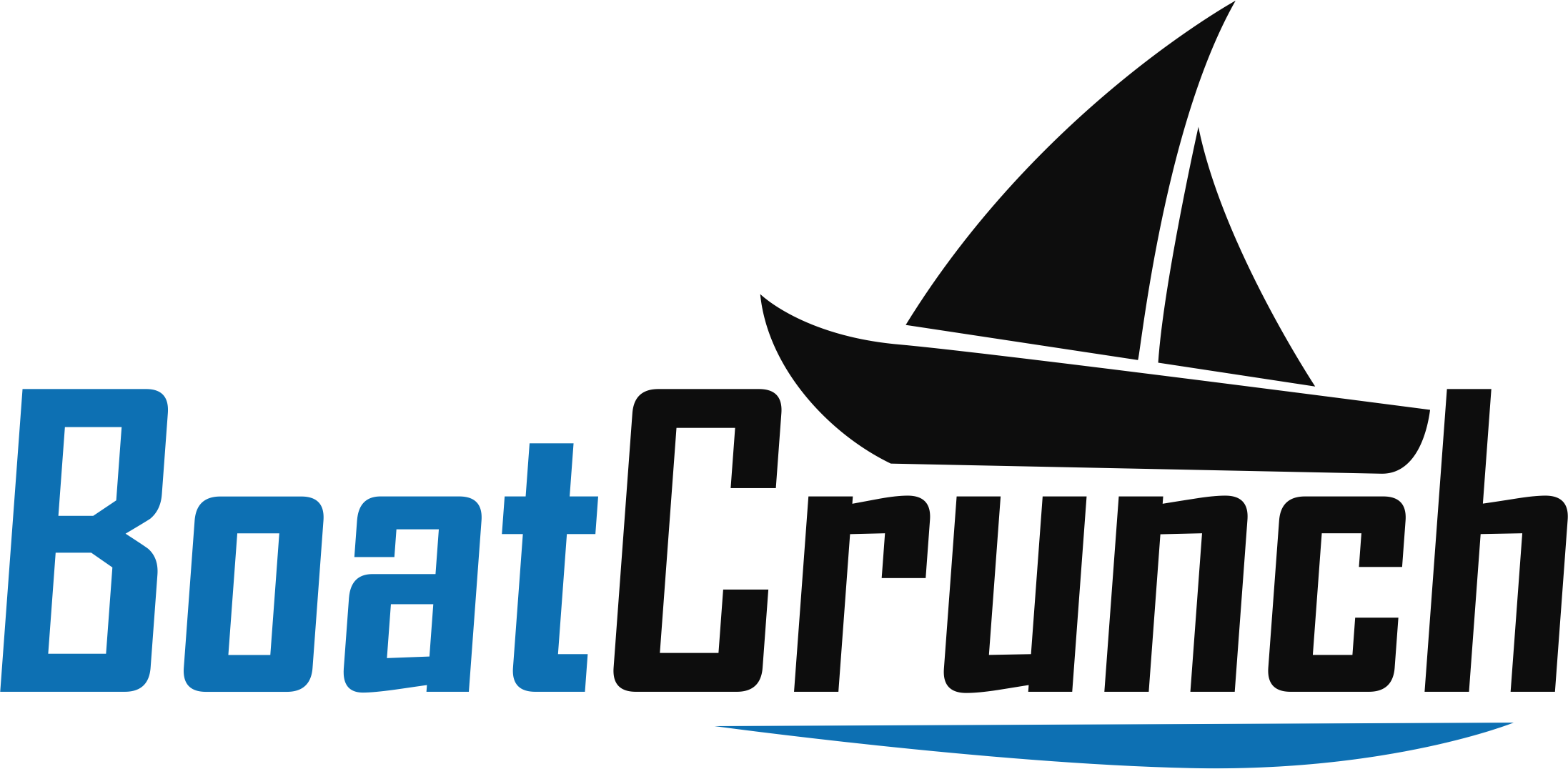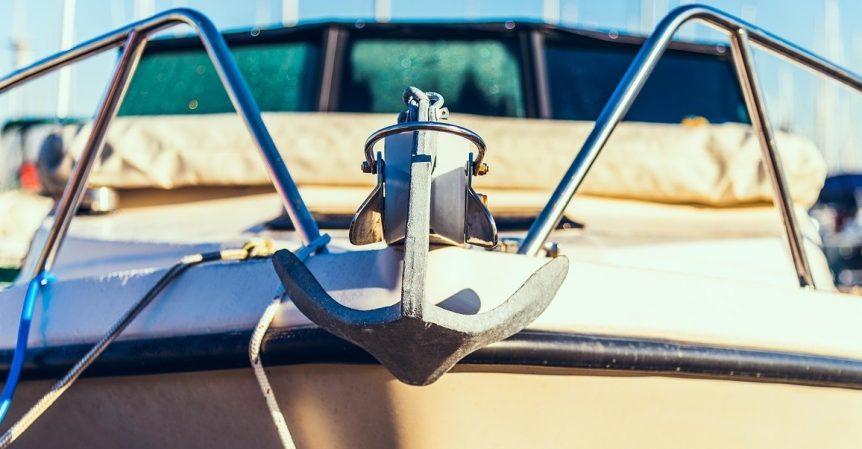When we want to come to a complete stop and hold our position, we use an anchor. The process of anchoring a boat is not very difficult, you just need the right guidance.
How do most anchors hold a recreational boat in place?
This is a common question on boating exams. It may also be a question that someone new to boating may have.
The answer is rather simple.
Anchors hold recreational boats in place by penetrating and burrowing into the surface of the sea bed. This creates pressure and resistance. When anchor rode is pulled on, the anchor will deep deeper into the seabed, causing further resistance and stabilizing the boat in place.
In this guide, I’ll go into a bit more detail on how recreational boats are held in place with anchors. The answer get’s a little more complexed and there are many things you should consider when anchoring.
What is an Anchor?
Let’s begin by discussing what an anchor is.
An anchor is a heavy object which connects a vessel to the seabed, thus holding the vessel in place. An anchor is attached to a boat using a combination of chains, ropes or cable.
Ancient anchors relied solely on the heavy weight of the device. They were often sacks filled with stones or sand. Sometimes logs were loaded with lead.
A standard anchor will have flukes which are pointed edges which in combination with the heavy weight of the anchor will dig deep into the seabed and cause resistance, locking the boat in place.
Nowadays, there are many more different types of anchor, designed for different situations. For example, box anchors are designed for muddy seabed’s whereas a grapnel anchor would be more effective on a rocky bottom.
Sure, you may have already known what an anchor is, but do you know how an anchor holds a boat in place?
How Does an Anchor Hold a Boat in Place?
Anchors and dropped down to the bottom of the water and their heavy weight causes them to sink straight down. Flukes on the anchor will then dig into the seabed. When anchoring, the recreational boat will still drift slightly or in some cases the driver will reverse gently to apply pressure to the anchor. This causes the anchor to dig deeper in the seabed and therefore cause more resistance. This provides more stability and keep the boat in place securely.
When purchasing an anchor for your recreational boat, you should carefully consider what type of anchor you need. This will depend on the type of boat you have, but most importantly the type of sea bottoms you’re boating on. As mentioned previously, different types of anchor will work better on different types of sea bottom.
The larger your boat, the heavier of an anchor you’ll need. Recreational boats tend to be a lot smaller than industrial and commercial boats, therefore we don’t need huge anchors. Though the weight of the anchor is one of the main reasons why the boat stays in place, the fluke type is also very important in ensuring the anchor can dig into the sea bottom material.
Things to Consider When Anchoring
Seabed Material
As I’ve already mentioned a few times now, the condition of the seabed as a huge factor when it comes to which anchor you need to hold your recreational boat in place.
Every seabed has a corresponding anchor type which works best.
For example, for anchoring on light vegetation or mud, you’ll want an anchor which maximizes the amount of surface contact for a sturdy grip. For anchoring on rocky bottoms, your anchor won’t be able to dig into the seabed like it would on mud therefore an anchor with claws would be more effective.
Because of this, it may be a good idea to have multiple different anchors if you sail onto waters with varying types of seabed conditions. Personally, I take my boats to many different places, so I have a few different types of anchors which I swap out for different trips.
- Box Anchor: Muddy Conditions
- Fluke Anchor: Sandy, Gravel Conditions
- Grapnel Anchor: Rocky Conditions
Anchor Material
The material that the anchor is made from is another factor which you may want to take into consideration. Though often neglected, the material of your anchor will be a huge factor in how strong, heavy and durable your anchor is.
The most common material for anchors is aluminum and a variation of different steels (high-tensile steel, mid steel and stainless steel)
You’ll find that many anchors are advertised as ‘Galvanized’. This is because high-tensile and mid steel anchors aren’t corrosion resistant so are galvanized to prevent corrosion and rusting.
The galvanization on anchors wears out over time, but lucky for us, anchors can be re-galvanized which saves us from having to purchase a brand-new anchor.
Stainless steel and aluminum do not need to be galvanized.
Stainless steel is more than twice as heavy as aluminum. Therefore, stainless steel is a more popular anchor material than aluminum. Though aluminum does work very well for specific types of anchor. Aluminum anchors rely on the anchor digging into the seabed for holding power rather than weight.
Anchor Rode
You’ll need some sort of anchor rode to attach your anchor to your recreational boat.
Anchor rode is the rope or chain which connects the boat and the anchor together.
So, which is best, rope or chain?
Ideally, you’ll want to use both a rope and a chain.
Most of the rode will be rope and the end with the anchor should be chain.
This is because chain is more durable than rope, so it’s better that chain is dragging against the sea bottom rather than rope for increased life-span of the anchor rode.
Also, chain is heavier than rope, so it helps sink the rode to the bottom of the sea and allows for the anchor to be dragged horizontally and therefore allowing for a better pinch on the sea bottom material.
Choosing a Chain

There are a few different materials which a chain can consist of. These are proof coil and BBB which are made from low-carbon steel. As well as, high-test and stainless steel.
Each material has its own attributes which should be considered when picking a chain for your anchor.
High-test is well known for its strength. It has a work load limit of almost double that of a BBB chain. Though strong, high-test is not very durable so it may not last as long as a stainless-steel chain which is rust-proof.
As mentioned previously, stainless-steel chains are rust-proof which means that they tend to have a long life-span and high durability. Though, this is an expensive material.
Proof coil is the cheapest material and it has similar working load limits to a BBB chain. They’re both similar chains in general. They also share the same number of links per foot as high-test chains.
To learn more about anchor chain materials, I’d suggest this article by Cruising World.
Choosing a Rope

You also have a few options when it comes to choosing the type of rope you purchase.
These options include…
When it comes to anchoring a recreational boat in place, without a doubt, Nylon is the best material for the job. You’ll find that this is the most popular rope and you’ll find it in every boat shop.
A few reasons why Nylon is perfect for anchors:
- Nylon is elastic and therefore it provides great shock absorption against waves.
- Nylon is light and flexible, making it very easy to maneuver and manipulate.
- Nylon doesn’t float, it sinks.
- Nylon provides great strength, which therefore makes it long-lasting and durable.
Conclusion
There are many different factors which come into play when it comes to how anchors hold a recreational boat in place. All the way from the type of anchor, to the material of the anchor, to the anchor rode and materials.
It’s a common misconception that an anchor simply relies on its heavy weight. Or at least, anchoring has evolved from that into something more complex but also more effective.

My name Is Larry Noel, the voice behind BoatCrunch.
I’m a boating enthusiast that loves nothing more than being out on the water. So much so that I’ve acquired a Degree in Marine Biology (MB) as well as a degree in Ocean Engineering (OE).
I’m very familiar with a wide range of different boats and I’ve owned a variety of different boats myself however I have a particular obsession with Pontoon boats. I’ve lived all across the United States and always kept company in the form of boats and now my loving family.

